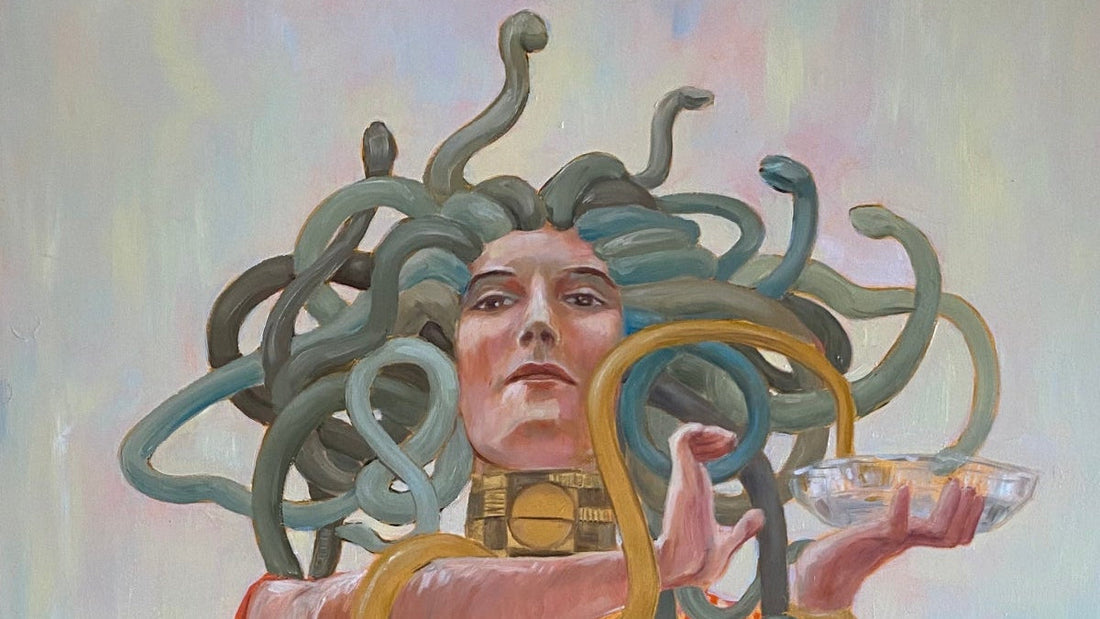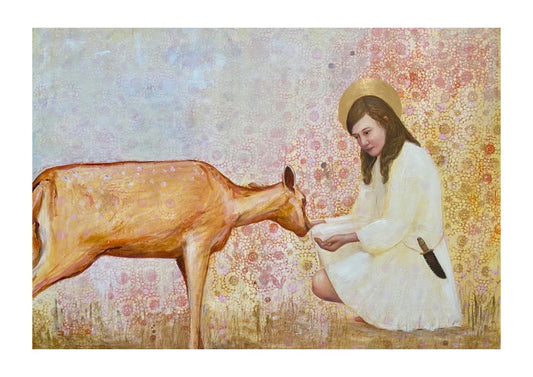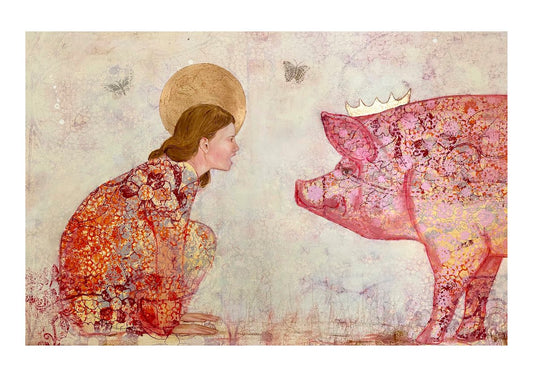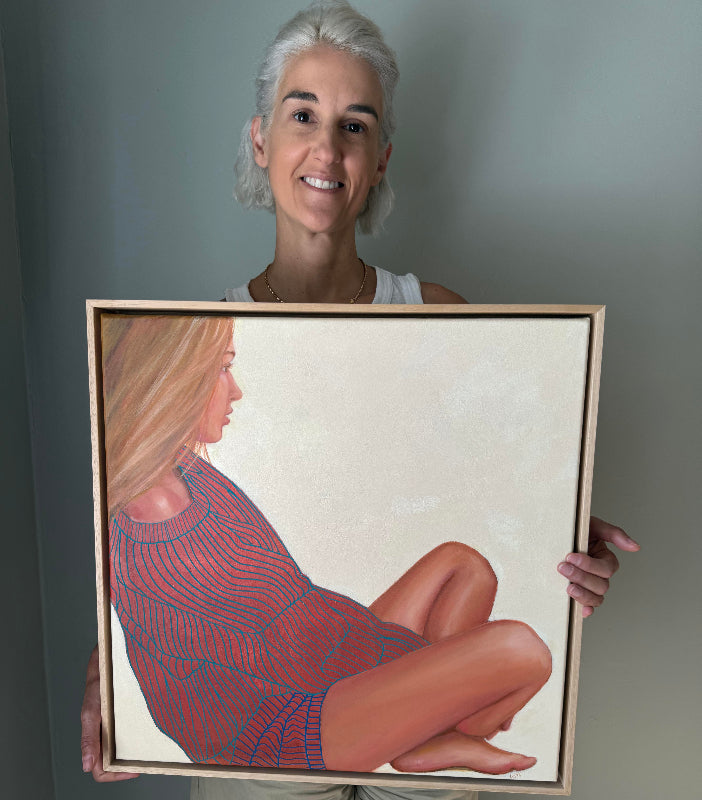
Klimt: Medusa as inspired by Klimt's Hygieia
No series on women in Greek Mythology would be complete without Medusa, so that's where I decided to start my new series. For my first painting of Medusa, I looked to Klimt's painting of Hygieia for inspiration. This may seem strange to some, however, Hygieia is also from ancient Greek Mythology, and her emblem includes a snake. Also, I love Klimt, so it seemed logical to me.
Gustav Klimt (1862 -1918) painted Hygieia as part of his ceiling painting called Medicine, which was commissioned by the University of Vienna. Presented in 1901, it was later destroyed by retreating German SS forces at the end of the Second World War. Only a few photographs and some preliminary drawings remain.
Hygieia is the Greek goddess of health and hygiene and is the daughter of the god of medicine. Hygieia's symbol is a goblet or chalice with a snake twined around its stem. Klimt has depicted her with a gold Aesculapian snake around her arm and the cup in her hand: thus, her arm acts as the stem of the chalice. The Aesculapian snake is non-venomous and non-threatening to humans and is a symbol of good health.
In my painting of Medusa, I have used a female figure similar to Klimt’s, but shown her with a head of green snakes, while keeping the gold snake around her arm, and repurposing the cup as a shallow bowl to provide water for her pet snakes. Like most of Klimt's women, she is attractive and powerful. She looks down at the viewer with her all-knowing gaze.
Images of snakes were widely used throughout the history of art as symbols of fertility, wisdom or healing. However, due to the influence of Judaism & Christianity, especially during the Renaissance and Baroque periods, snakes in Western culture became a symbol of evil. “The serpent of old” became a nickname for Satan and the Virgin Mary was often depicted in art treading on a snake, symbolically stomping out evil. Despite the mostly negative connotations in Western culture, snakes continue to embody ambiguous or even positive aspects in myths worldwide.
In this painting of Medusa, she is surrounded by snakes, both on her head and around her arm. Despite the negative connotations associated with snakes, Medusa looks calm and alluring. Similar to Klimt's gold Aesculapian snake, I prefer to think of Medusa's snakes as symbols of wisdom and healing, rather than as perpetrators of evil.
 |

|
Medusa had the power to turn men to stone, and yet, for all her power, she did not use it to her own advantage. Like most powerful women in history, she has since been vilified. Through my contemporary depiction of her, I hope to paint her in a more flattering light.






